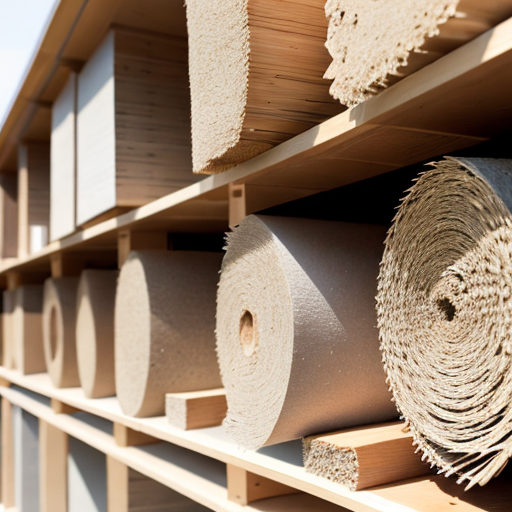Since 2022, the construction industry has faced numerous challenges, including significant price increases in building materials. This surge in costs can be attributed to various factors, such as supply chain disruptions, increased demand, and global market dynamics. These rising costs have impacted construction projects at different stages, making it essential for industry professionals to understand the reasons behind these price hikes. In this article, we will explore the causes of price increases and provide examples of affected building materials, drawing information from credible sources.
Lumber:
Lumber prices have experienced an unprecedented surge since 2022. The primary driver behind these price hikes is the combination of increased demand and supply chain disruptions caused by the COVID-19 pandemic. The pandemic led to mill shutdowns, labor shortages, and transportation delays, affecting the availability of lumber. The housing market’s strength, coupled with higher remodeling activities, further intensified the demand for lumber, leading to soaring prices.
According to a report by the National Association of Home Builders (NAHB), lumber prices reached record highs in 2022, with costs per thousand board feet rising by over 300% compared to 2021. This surge in prices has significantly impacted the construction industry, particularly residential projects, where lumber is a primary material source.
Steel:

Types of materials used for building a home can be many
Steel, a crucial material in construction, has witnessed significant price increases since 2022. Several factors have contributed to these rising costs, including higher raw material prices, trade tariffs, and global supply chain disruptions. The increased demand for steel from the construction and manufacturing sectors has further strained the market. Iron ore and scrap metal, essential components for steel production, have experienced supply constraints due to increased global demand and disruptions in mining operations.
The American Institute of Steel Construction (AISC) reported that steel prices have surged by nearly 50% since 2022. These price increases have impacted various construction projects, such as high-rise buildings, infrastructure developments, and large-scale manufacturing facilities, which heavily rely on steel as a structural material.
Copper:
Copper prices have been on the rise since 2022 due to multiple factors. The growing demand for renewable energy sources and the increasing popularity of electric vehicles have driven up the need for copper in electrical wiring and infrastructure. Supply disruptions from major copper-producing countries, including Chile and Peru, as well as labor disputes in mining operations, have further constrained copper availability.
According to the International Copper Study Group (ICSG), copper prices reached a record high in 2022. The combination of increased demand and supply constraints has led to significant price hikes in copper, impacting construction projects that involve electrical installations, renewable energy infrastructure, and transportation systems.
PVC and Plastic Products:
PVC and plastic products used in construction, such as pipes, insulation, and roofing materials, have experienced notable price increases since 2022. The volatility in the petrochemical industry, which supplies raw materials for plastic production, has been a primary driver of these price hikes. Higher crude oil prices, disruptions in the global supply chain, and increased global demand for plastic products have contributed to the surge in costs.
According to the Plastics Industry Association (PLASTICS), the cost of plastic materials used in construction has increased by over 30% since 2022. This escalation in prices has affected projects involving plumbing systems, energy-efficient building envelopes, and waterproofing solutions, all of which rely heavily on PVC and plastic materials.
Insulation Materials:
Insulation materials, such as fiberglass and foam insulation, have experienced notable price hikes since 2022. The increased demand for energy-efficient buildings and stricter building codes emphasizing insulation performance have driven up the need for these materials. However, supply chain disruptions and rising costs of raw materials, including glass fibers and petrochemical-based foam, have impacted the overall cost of insulation products.
The Building Enclosure Technology and Environment Council (BETEC) reported that insulation material prices have risen by approximately 20% since 2022. These price increases have affected projects aiming for high energy efficiency ratings, both in the residential and commercial sectors. Builders and contractors have had to adapt their strategies and explore alternative insulation materials or methods to mitigate the impact of these rising costs.
Roofing Materials:
Roofing materials, including asphalt shingles and metal roofing, have witnessed price increases in recent years. Rising costs of raw materials, transportation, and labor have all contributed to the overall increase in roofing material prices. Additionally, extreme weather events such as hurricanes and wildfires have created a surge in demand for roofing materials, further straining the supply chain and causing additional price hikes.
The National Roofing Contractors Association (NRCA) stated that roofing material costs have risen by approximately 15% since 2022. This upward trend in prices has affected various projects, including roof replacements, new construction, and disaster recovery efforts. The increased costs have compelled contractors to carefully manage their budgets and explore alternative roofing solutions to maintain project feasibility.
Sources:
National Association of Home Builders (NAHB) – https://www.nahb.org/
American Institute of Steel Construction (AISC) – https://www.aisc.org/
International Copper Study Group (ICSG) – https://www.icsg.org/
Plastics Industry Association (PLASTICS) – https://www.plasticsindustry.org/
Building Enclosure Technology and Environment Council (BETEC) – https://www.betec.org/
National Roofing Contractors Association (NRCA) – https://www.nrca.net/
